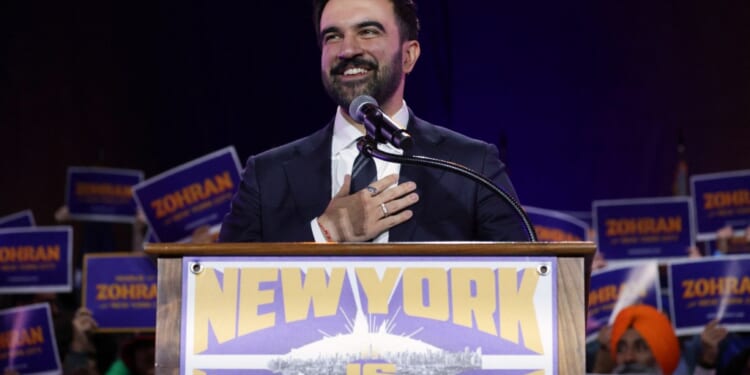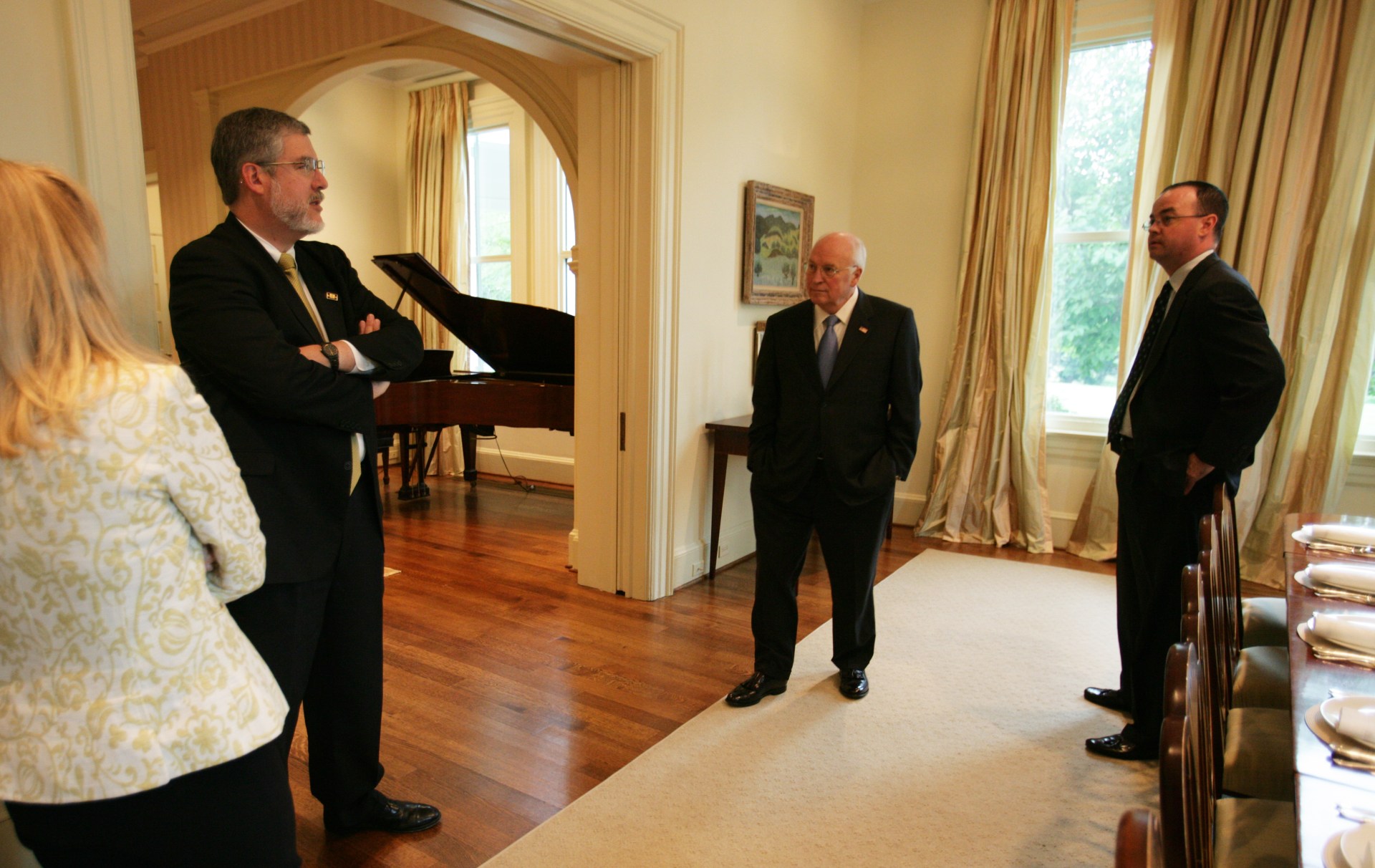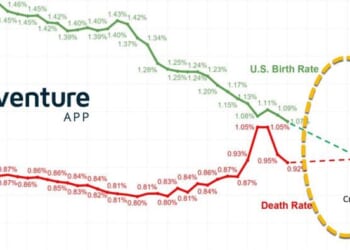Editor’s Note: We have completely unlocked today’s newsletter to give all readers a taste of the full TMD experience—no paywalls. If you’re a paying member, we hope you’ll consider forwarding this email to any family or friends you think might be interested in what we do. If you’re a free reader, we hope you’ll consider unlocking the full edition going forward by joining as a paying member here.
Also, SCOTUSblog will be live blogging the oral arguments in Learning Resources Inc. v. Trump beginning at 9:30 a.m. ET. Head over to SCOTUSblog and follow along with the best legal minds in the business! You can also tune into the SCOTUSblog livestream.
Happy Wednesday! We applaud all who took the time to vote yesterday—and even those who tried to in Kentucky, prompting Secretary of State Michael Adams to tweet, “We’re getting calls about polls being closed. They are closed because we do not have elections today. Kentucky votes next year. You cannot vote today in Kentucky for the mayor of New York City or the Governor of Virginia. Sorry.” But hey, it’s the enthusiasm that counts!
Quick Hits: Today’s Top Stories
- In a three-way race for New York’s mayoralty, Democratic candidate Zohran Mamdami—a left-wing populist state legislator who won his party’s primary in a surprise campaign—defeated former Democratic Gov. Andrew Cuomo, who ran as an independent, and Republican candidate Curtis Sliwa, an anti-crime activist. TMD covers Mamdami’s victory in more detail below, but with 91 percent of the vote in, Mamdami led with 50.4 percent of the vote, while Cuomo came in second with 41.6 percent, and Sliwa finished third, with 7.1 percent of the vote.
- Rep. Abigail Spanberger, a Democrat, defeated Lt. Gov. Winsome Earle-Sears, a Republican, in the Virginia gubernatorial election, winning 57.5 percent of the vote, with more than 95 percent of votes reported—a strong improvement on Democrats’ 2024 performance in the state. In Virginia’s other statewide race, for attorney general, Democratic candidate Jay Jones, a former state delegate, defeated the incumbent Republican, Jason Miyares, winning 53.1 percent of the vote. The race was rocked by the revelation that Jones had sent texts in 2022 fantasizing about the deaths of a Republican state legislator and his family. Spanberger, a prominent moderate who will become the first woman governor in her state’s history, told supporters in her victory speech that voters had chosen “pragmatism over partisanship” and picked “leadership that will focus relentlessly on what matters most: lowering costs, keeping our communities safe, and strengthening our economy for every Virginian.” To read more about the race, read yesterday’s TMD.
- Rep. Mikie Sherrill, a Democrat, defeated former state Rep. Jack Ciattarelli, a Republican, in the election for New Jersey governor. With more than 95 percent of votes reported, she beat Ciattarelli 56.2 percent to 43.2 percent—a blowout win in a state many Republicans hoped could be competitive. Ciattarelli, who has run for governor twice before, was considered a strong candidate after losing to Democratic incumbent Phil Murphy by only 3.2 points in 2021 and gained President Donald Trump’s endorsement this cycle. Sherrill, a moderate former naval officer and federal prosecutor currently representing New Jersey’s suburban 11th Congressional District, significantly improved on Democrats’ performance in the previous election. Not since the 1960s has either political party won three consecutive gubernatorial elections in New Jersey. “People around the country have heard you,” Sherrill told the packed hotel ballroom during her victory speech, tipping her cap to the apparent anger with Trump that fueled her victory. “Tomorrow begins a new day.”
- In California, a ballot measure introduced by Gov. Gavin Newsom proposing new congressional maps in response to Texas’ recent redistricting effort passed with 64 percent of the vote, with 71 percent of the votes counted. In Maine, more than 63 percent of voters said “Yes” to a “red-flag” ballot measure—making it easier for family members of potentially dangerous people to petition for courts to restrict their access to firearms. By nearly the same margin they voted “No” to a separate voting restrictions measure that would have required photo ID for casting ballots and changed the absentee voting process. In Pennsylvania, voters elected to retain three members of the state Supreme Court for another 10-year term, preserving the court’s Democratic majority. In Georgia, Democrats won both open seats on the state’s five-person Public Service Commission, which regulates major utilities, marking the first time Democrats have won a statewide constitutional office since 2006. In Texas, the race to replace the late Democratic Rep. Sylvester Turner is headed to a runoff between Democrats Christian Menefee and Amanda Edwards, neither of whom garnered more than 50 percent of the vote in a 16-candidate election.
Dreams vs. Dollars

Mayor-elect Zohran Mamdani has ambitious plans for New York City. The democratic socialist upstart won Tuesday’s mayoral race on a campaign platform calling for the formation of state-operated grocery stores, a rent freeze, free buses, and universal child care, among other affordability initiatives.
But when Mamdani enters office on January 1, 2026, how much of his ambitious agenda can he plausibly enact?
“The New York City mayor does have a lot of power,” Nicholas Dagen Bloom, a professor of urban policy and planning at Hunter College in Manhattan, told TMD. While the city’s government is a strong mayor system—with the mayor choosing a broad range of city appointees including police commissioner, fire commissioner, school chancellor, and transportation commissioner—Bloom noted that the mayor’s power is restrained by the 51-member city council in the normal work of things like approving an annual budget.
Not only could that process prove challenging, but Mamdani’s sweeping platform will also need the backing of the New York state government. “The first challenge in reviewing Mamdani’s platform is the extent to which he’s relying [on] pretty expansive permission coming from Albany,” Ken Girardin, a Manhattan Institute fellow and former aide in the New York State Legislature, told TMD.
For example, Mamdani plans to increase both the income tax on the top 1 percent of earners and the corporate tax, which he claims would raise $9 billion to fund his various affordability initiatives. But both tax increases would have to be done at the state level and—as The Dispatch’s David Drucker has reported—there’s skepticism that Mamdani can successfully persuade the Legislature to approve the hikes.
Mamdani would pay for the free stuff he’s offering by taxing the so-called rich. But under state law, New York City cannot raise the city income tax without Albany signing off, and Gov. Kathy Hochul, a Democrat up for reelection in 2026, is promising to oppose tax hikes on Big Apple residents regardless of how much money they earn. Her stance is partly a product of not wanting mobile, wealthy professionals to abandon the city for lower tax climes.
It’s a commitment the Hochul administration highlighted Monday, responding to an inquiry from The Dispatch by pointing to the governor’s remarks during a late June news conference. “I have said that I will not raise income taxes on the people of our state. I’m focused on affordability, and raising taxes on anyone does not accomplish that. I’m just making sure that people who create jobs will stay here so we can have good-paying jobs,” Hochul said.
Richard Briffault, a state and local government expert at Columbia Law School, told TMD that though the tax increases would only apply to city residents, they would have “a broader impact” on the state at large. In 2023, New York City accounted for nearly 60 percent of the state’s gross domestic product, and if “businesses leave, some of the employees are non-city residents … it affects the overall economic climate of the state.”
Without increasing tax revenue, Mamdani will struggle to fund his wide-ranging proposals—and the state and city are already facing financial pressure.
“Imagine you are a senior official at the New York State Department of Tax and Finance,” Girardin said. “The dashboard you’re looking at now has some indicators that are already blinking yellow, if not red.”
According to the New York Citizens Budget Commission—a nonpartisan, nonprofit fiscal watchdog—the share of American millionaires living in New York state declined from 12.7 to 8.7 percent between 2010 and 2022, and the share in New York City fell from 6.5 percent to 4.2 percent. “This is a real problem of lost potential revenue,” Citizens Budget Commission President Andrew Rein told TMD. Had the share stayed constant, the state and city governments would have collected an estimated $13 billion combined in additional tax revenue.
New York also taxes capital gains as ordinary income, and according to an October report from New York state Comptroller Thomas DiNapoli, business and personal income taxes on securities contributed $22 billion to the state’s 2024-25 annual budget and $6.7 billion to New York City’s fiscal year 2025 budget. That reliance comes with risks. “If there’s a major downturn in financial markets or a recession, you could see city [tax] receipts not just fail to grow, but fall,” Girardin said.
Additionally, federal dollars fund a sizable share of the city’s government programs. The city’s proposed operating budget for fiscal year 2026 “relies on $7.4 billion in federal government funding,” or about 6.4 percent of the city government’s total spending, DiNapoli’s office said in an April press release. On October 1, at the start of the federal government shutdown, President Donald Trump’s administration suspended $18 billion in funds for two New York City infrastructure projects. In a Monday Truth Social post, Trump wrote that, if Mamdani were to win, “it is highly unlikely that I will be contributing Federal Funds, other than the very minimum as required.”
If revenue were to drop too far, the city government would not be able to afford current expenditures, much less the mayor-elect’s various campaign proposals. “[Mamdani] walks into a budget that already has a pre-existing budget gap,” Rein explained. “He will have to take action to close that gap,” adding that the mayor-elect’s team will look to “identify where he can shrink lower-impact programs, [and] where he can preserve programs that are actually helping people and run them more efficiently.”
“Both the city and the state have to think about how to pay for the old initiatives if there’s going to be a reduction in federal funding,” Briffault said. Mamdani will have to cut costs.
In June, New York City adopted a $115 billion budget for the fiscal year 2026. A quarter of that is for education spending. The next largest categories are human services, public safety and the judicial system, city employee pension funds, and debt service payments. “You can’t just sort of wave a magic wand in terms of funding, right?” Bloom said. “You have to identify sources of funding, either new ones or reallocate.” He added, “And that’s politically very difficult, because everybody believes that their … current funding is probably not enough.”
Briffault noted that Mamdani could look to implement his proposals by funding them on a “phased-in basis, so you don’t have to pay for the whole thing at once.” For example, he pointed to Mamdani’s plan to provide free child care for every child between 6 weeks and 5 years old. Briffault explained that planning a program and certifying various child care providers would take at least one year to implement, but that could give Mamdani additional time to find funding options.
Mamdani could also proceed with a more narrow, limited version of his plans and expand them later if the money becomes available. Mamdani’s platform promises “he’ll permanently eliminate the fare on every city bus.” But if that proves too costly, Briffault suggested that the city could begin by gutting bus fares for low-income riders or for specific routes. That may also help him gain approval from the Metropolitan Transportation Authority’s leadership, the 23-member board that oversees the city’s bus system, of which the mayor can only make four appointee recommendations to the governor.
According to Bruce Berg, a political science professor at Fordham University, Mamdani’s most valuable bargaining chip with political opponents is “his coalition and his bully pulpit.”
“It’s a large coalition,” he told TMD. State and local officials, especially those in elected positions, likely know that if Mamdani “goes out and mobilizes them, he can use them to support me, [or] he can use them to oppose me.”
Bloom believes that Mamdani’s robust online presence and support base could provide him with the necessary boost as he seeks to rally support for his ambitious executive agenda. “If he continues to kind of talk directly to people through social media,” Bloom said, “I think he could actually be very successful.”
“That might be the biggest determination [of] whether he’s able to kind of move things is” Bloom added. “Does he preserve that outlet?”
Today’s Must-Read
Beyond the stern public image, Vice President Dick Cheney had an impish sense of humor and even joked about being called “Darth Vader,” reveals Shannen W. Coffin, who served as counsel to the vice president from 2005 to 2007. In this personal remembrance following Cheney’s death at age 84, Coffin offers an intimate portrait of the man he simply called “the Boss”—a Wyoming-born leader with a quiet assuredness, an encyclopedic knowledge of political history, and a crooked grin that appeared when recounting mischievous pranks on colleagues. Drawing on behind-the-scenes moments from some of the Bush administration’s most challenging years, Coffin presents a side of one of America’s most powerful and controversial vice presidents that few outside his inner circle ever witnessed.
Toeing the Company Line
In Other News
- The federal government shutdown hit its 36th day, becoming the longest in history.
- Secretary of Defense Pete Hegseth announced the 16th strike on a suspected drug-smuggling boat, claiming to have killed two people aboard. The United States has killed at least 66 people in the campaign.
- Maryland Gov. Wes Moore, a Democrat, announced the creation of a commission to redraw the state’s congressional maps after the state Senate said it would not proceed with redistricting.
- Transportation Secretary Sean Duffy said the FAA might be forced to shut down airspace in parts of the country if the government shutdown continues into next week.
- Sam Bankman-Fried’s legal team appeared before a panel of appeals court judges on Tuesday, who seemed skeptical of their arguments that the cryptocurrency entrepreneur’s fraud conviction and 25-year prison sentence should be overturned.
- At least seven people were killed and 11 injured after a UPS freight plane crashed shortly after takeoff from the Louisville Muhammad Ali International Airport Tuesday.
- At least 90 people have died so far from Typhoon Kalmaegi, currently passing through the central Philippines.
- A drone strike at a funeral in Sudan killed 40 people as the country’s civil war continues, with local authorities blaming the paramilitary Rapid Support Forces.
- The body of Israel Defense Forces soldier and U.S. citizen Itay Chen, killed on October 7, 2023, was returned to Israel by Hamas on Tuesday night.
- Iran released Cécile Kohler and Jacques Paris, two French nationals who’d been imprisoned since May 2022 after Iran accused them of spying.
- The Maldives banned smoking for anyone born after 2006, the first country to do so on a generational basis.
- Laurent Mauvignier won France’s top literary award, the Goncourt Prize, for his family saga La Maison Vide (The Empty House).
- China announced that it would begin a program of import promotion for trade partners concerned about Chinese goods flooding their markets.
- Saudi Arabia’s state oil company announced $28 billion in profit for the third quarter, $1.5 billion higher than its own estimates.
- A National Association of Realtors survey found the median age of first-time homebuyers in the U.S. is now 40 years old, up from 29 in 1981 and 37 in 2021.
- Anthropic announced it is partnering with Iceland to give teachers access to its chatbot Claude, touting the program as “one of the world’s first comprehensive national AI education pilots.”
- From October: Astead Herndon’s detailed profile of Zohran Mamdani. (New York Times)
- David Frum and Yuval Levin remember the life of Dick Cheney. (The Atlantic and National Review)
- Nilesh Christopher meets the people training AI robots how to act like humans. (Los Angeles Times)
- George Will on the stakes of the tariff Supreme Court case, in which oral arguments take place today. (Washington Post)
- “In Search of the Simpsonville Massacre” (New York Times)
- Ben Farmer, Lilia Sebouai, and Konan Tipen report from Sudan on the country’s genocide. (Telegraph)
Newsweek: Greg Abbott Threatens ‘100% Tariff’ On New Yorkers Moving to Texas
E! News: Kim Kardashian Blames ChatGPT for Failing Her Law Exams
The Independent: Sandwich Thrown at Federal Agent ‘Exploded’ on Impact, Officer Tells Court: ‘You Could Smell the Onions and Mustard’
Let Us Know
Have any thoughts or questions about today’s newsletter? Drop us a note in the comments or by emailing us at tmd.questions@thedispatch.com. We read every submission, and your message could be featured in an upcoming “Behind the Scenes” segment.
Have any thoughts or questions about today’s newsletter? Become a member to unlock commenting privileges and access to a members-only email address. We read every submission, and answer questions in the following edition of TMD.





















